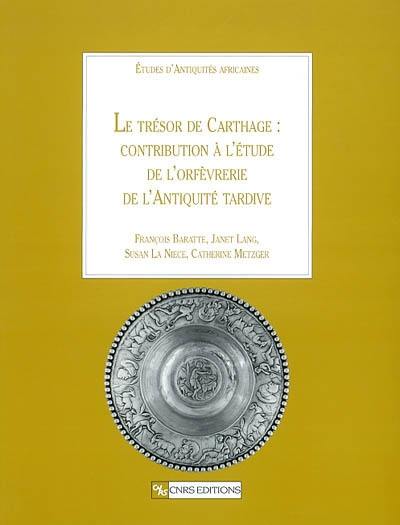
Fiche technique
Format : Broché
Nb de pages : 118 pages
Poids : 150 g
Dimensions : 22cm X 28cm
EAN : 9782271060099
Le trésor de Carthage
contribution à l'étude de l'orfèvrerie de l'Antiquité tardive
Quatrième de couverture
Hasard des découvertes sans doute, l'Afrique romaine n'a livré aux chercheurs que très peu de vaisselle d'argent et d'orfèvrerie. Le petit trésor découvert fortuitement sur la colline de Byrsa à Carthage au milieu du XIXe s. est la trouvaille la plus spectaculaire. Dispersé aujourd'hui entre le Musée du Louvre à Paris et le British Museum à Londres, il comportait de la vaisselle de table et quelques bijoux. D'une ampleur relativement modeste, cet ensemble, dont on daterait volontiers la cachette du courant du Ve s. apr. J.-C., est cependant une belle illustration de l'orfèvrerie qui pouvait être celle des notables africains à la fin de l'antiquité : une inscription soigneusement gravée sur l'un des plats se réfère sans doute à l'une de ces familles, les Cresconii.
Mais au-delà du témoignage sur l'Afrique romaine, le trésor présente quelques pièces tout à fait originales comme la patère ornée d'une grenouille, mais aussi des formes qui comptent parmi les plus intéressantes de l'antiquité tardive, caractérisées les unes par la qualité de leur exécution et du travail du métal (coupes à couvercle et petites louches), les autres par leur décor de reliefs (coupes à scènes pastorales).
L'origine des différents objets reste difficile à établir (l'un d'entre eux porte une inscription pondérale en grec), mais le trésor de Carthage constitue un important jalon dans l'histoire de l'orfèvrerie antique, et éclaire un aspect trop mal connu de la civilisation de l'Afrique romaine tardive.
Roman North Africa has yielded very few discoveries of silver-plate and jewellery. The most spectacular treasure is the small group of objects found on the hill of Byrsa, at Carthage, in the middle of the 19th century. Today divided between the Musée du Louvre in Paris and the British Museum in London, it consists of a table-service and some pieces of jewellery.
Although the extent of the treasure is relatively modest, this set, the burial of which can be dated to the 5th century BC, provides a good illustration of the precious metal artifacts which might have been in the possession of notables from Roman North African during Late Antiquity. An inscription carefully engraved on one of the plates doubtless refers to one of these families, the Cresconii.
Apart from its testimony to Roman society in North Africa, this treasure contains some very inventive pieces like a patera decorated with a frog, as well as plate which is some of the most outstanding from Late Antiquity. Some of the objects are characterised by a high quality of execution and metalwork (bowls with lids and small spoons), others by their relief (bowls decorated with pastoral scenes). The provenance of the different objects is still hard to establish (one of them has a Greek inscription referring to its weight), but the treasure of Carthage is an important landmark in the exploration of the history of Roman precious metalwork and shows hitherto little-known aspects of the civilization of Roman Africa in Late Antiquity.





